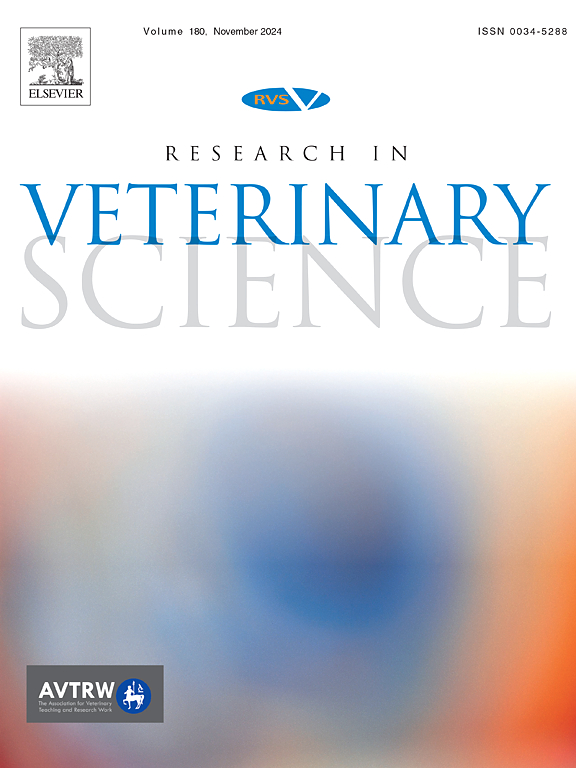牛输卵管上皮细胞中有性精子的存在改变了与应激和免疫反应相关的蛋白质谱。
IF 2.2
3区 农林科学
Q1 VETERINARY SCIENCES
引用次数: 0
摘要
尽管精子性别鉴定技术在过去十年中取得了相当大的进步,但要完全理解性精子生育能力低的原因仍然存在挑战。因此,我们旨在评估性别和无性别的精子对牛输卵管上皮细胞(BOECs)蛋白质组的影响。研究人员使用了六头Nellore公牛的精液,每头公牛的一次射精被收集并分成三部分:无性、x精子性和y精子性。先前同步的雌性被人工授精,要么用来自6个雄性的无性精子(NS),要么用来自6个雄性的X和Y性别精子(XY)或生理盐水溶液(Control)。授精后屠宰动物,采集输卵管获得boec样本,用于蛋白质组学分析。结果表明,使用有性精子和无性精子时,峡部输卵管对精子的反应是不同的。性精子似乎对一些过程产生了更强烈、更不平衡的反应,比如氧化和热应激、免疫反应和输卵管肌肉的运动。本文章由计算机程序翻译,如有差异,请以英文原文为准。

The presence of sexed sperm in bovine oviduct epithelial cells alters the protein profile related to stress and immune response
Although sperm sexing technology has progressed considerably in the last decade, there are still challenges to fully understand the reason for the low fertility of sexed sperm. Thus, we aimed to evaluate the effect of sexed and non-sexed sperm on the proteome of bovine oviduct epithelial cells (BOECs). Semen from six Nellore bulls was used and one ejaculate from each bull was collected and separated into three fractions: non-sexed, sexed for X-sperm and sexed for Y-sperm. Previously synchronized females were artificially inseminated with either a pool of non-sexed sperm from 6 sires (NS), or a pool of sexed X and Y sperm from 6 sires (XY) or saline solution (Control). After insemination, animals were slaughtered and oviducts were collected to obtain BOECs samples, which were used for proteomic analysis. The results revealed that the oviductal response on isthmus region to the presence of sperm is different when sexed and non-sexed sperm are used. Sexed sperm seemed to induced a more intense and imbalanced response to several processes, such as oxidative and heat stress, immune response and movement of the oviduct muscle.
求助全文
通过发布文献求助,成功后即可免费获取论文全文。
去求助
来源期刊

Research in veterinary science
农林科学-兽医学
CiteScore
4.40
自引率
4.20%
发文量
312
审稿时长
75 days
期刊介绍:
Research in Veterinary Science is an International multi-disciplinary journal publishing original articles, reviews and short communications of a high scientific and ethical standard in all aspects of veterinary and biomedical research.
The primary aim of the journal is to inform veterinary and biomedical scientists of significant advances in veterinary and related research through prompt publication and dissemination. Secondly, the journal aims to provide a general multi-disciplinary forum for discussion and debate of news and issues concerning veterinary science. Thirdly, to promote the dissemination of knowledge to a broader range of professions, globally.
High quality papers on all species of animals are considered, particularly those considered to be of high scientific importance and originality, and with interdisciplinary interest. The journal encourages papers providing results that have clear implications for understanding disease pathogenesis and for the development of control measures or treatments, as well as those dealing with a comparative biomedical approach, which represents a substantial improvement to animal and human health.
Studies without a robust scientific hypothesis or that are preliminary, or of weak originality, as well as negative results, are not appropriate for the journal. Furthermore, observational approaches, case studies or field reports lacking an advancement in general knowledge do not fall within the scope of the journal.
 求助内容:
求助内容: 应助结果提醒方式:
应助结果提醒方式:


